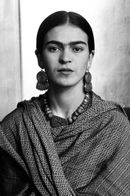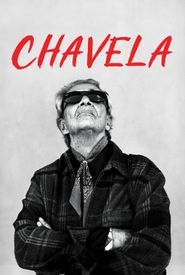Magdalena Carmen Frieda Kahlo y Calderon was born on July 6, 1907, in Mexico City, Mexico, as the seventh daughter of Guillermo Kahlo, a successful German photographer, and Matilde Calderón y González, a mestiza mother. Her father encouraged her interest in art, photography, and archaeology, while her mother was not well-educated and very religious.
At the age of six, Frida suffered an attack of poliomyelitis, which left her with a deformed leg. Despite this, she made a good recovery through exercise and determination. At 14, she enrolled in one of Mexico's best schools, hoping to forge a career in medicine. However, her life took a dramatic turn on September 17, 1925, when she suffered serious injuries in a traffic accident in Mexico City, breaking her spinal column, pelvis, collar bone, and two ribs.
Frida spent a month in the hospital and two months at home recovering, followed by 32 operations throughout her life. This prolonged hospitalization gave her the opportunity to rethink her life and become a painter, despite constant pain and discomfort.
She met her future husband, painter Diego Rivera, when he painted a mural at her school in 1923. They re-met in 1927 and began an affair, despite their age difference and awkward appearance together. They were married in a traditional Catholic civil ceremony in 1929, but their relationship was marked by melancholia, illness, separation, divorce, and re-marriage.
Frida's career as an artist was highly successful, taking her around Mexico, New York, and Europe. She was a closet lesbian/bisexual and had affairs with both men and women, including a fling with exiled Russian revolutionary Lev Trotskiy in 1938.
Frida and Diego divorced early in 1940, and her health began to deteriorate. Her moderate to heavy drinking, chain-smoking, and steady diet of candy exacerbated her infirmity. In the early 1930s, she developed an atrophic ulcer on her right foot, from which several gangrenous toes were amputated in 1934.
Frida and Diego reconciled and were re-married on his 54th birthday in December 1940 in San Francisco, California. Following the amputation of her right leg in 1953, Frida became a recluse and more deeply depressed, finally losing the will to live. She was found dead at home in Mexico City on July 13, 1954, allegedly from kidney, liver, and heart failure, although some believe she committed suicide by taking an overdose of pills.
























